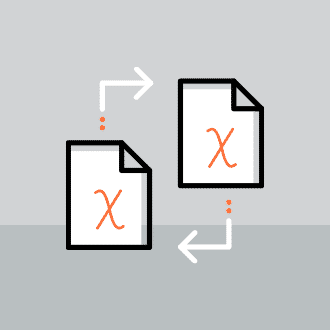In technical communication, variables are a common way to reuse terms or content (such as the name of your company's product or your company's phone number) throughout your documentation. They're especially good for text that might change frequently, such as version numbers and dates. For all of their obvious benefits, there are some common challenges when it comes to translating variable content. In this post, we’ll take a look at some of these common issues and how they can be addressed.
Gender
Using variables is easy when they stand for values or numbers. Text on the other hand can introduce some challenges.
For example, take the use of articles; when written in English, the fact that the article never changes makes things simple. The author of the source text is blissfully unaware of the issues when content gets translated further down the line. But when translating in German, articles and nouns must be conjugated and declined correctly depending on the case and gender of the subject matter. Here’s a short example from a software user manual:
Let’s say a translator has to translate the following sentence into German:
The value for the {0} has an influence on the value of the {1}.
He or she has no idea what placeholders {0} and {1} might stand for and doesn’t know that the following three options are possible for the sentence above:
- The value for the inlet opening has an influence on the value of the minimum.
- The value for the center has an influence on the value of the average time.
- The value for the outlet opening has an influence on the value of the
In English there is no problem here. The nouns hidden by the placeholders don’t have to be declined and the article (“the”) always stays the same. But for the sentence to be grammatically correct in German, different articles have to be used:
Der Wert für die Eintrittsöffnung beeinflusst den Wert für das Minimum.
Der Wert für den Mittelpunkt beeinflusst den Wert für die Durchschnittszeit.
Der Wert für die Auslassöffnung beeinflusst den Wert für das Maximum.
The ideal solution here would be to rewrite the sentence so that no different declination is required in the translation. But given how many languages a text may be translated into, that almost certainly won’t work for all of them.
Let’s look at another example that would cause problems in some languages like Czech, where the declination of words depends on the number:
EN: 1 bar
CZ: 1 bar
EN: 4 bar
CZ: 4 bary
EN: 7 bar
CZ: 7 barů
If the value is represented by a variable, the translator will not be able to determine the correct form of the word “bar”. In most cases, there will only be one single string that will cover all possible values (like {0} bar).
Avoiding Issues
When using variables in a MadCap Flare project, variables can be flattened for translation in MadCap Lingo, which makes it easier to edit the translation where the text appears. The latest version of MadCap Lingo provides the option to pick and choose which variables to flatten, so it’s not an “all-or-none” scenario. If you anticipate a need to change the variables in a translated Flare project, you will want to pay close attention to how they are used and discuss with your translation provider. Flattening the variables will convert the variables to plain text in the translated project(s). While you lose the ability to use variables in the translated projects, in exchange, you alleviate any language issues that variables may introduce. This is particularly helpful when packaging XLIFF files for translation.
When translating directly in MadCap Lingo, it will resolve the variable in the tag display (see segment 1, 7, and 8 below). Most tools will not resolve the variable, so the translator typically will not see the variable text, outside of MadCap Lingo. Instead, they are presented with the text as it is meant to be translated.

In short, to avoid problems or translations with language or incorrect grammar, it is important that the translators know:
- that variables are being used,
- which variables they are,
- and what each variable stands for.
By clarifying the use of variables early in the translation and localization process, the confusion that may arise from article usage, gender, word order, and other language-specific limitations is minimized. In the end, the translator sees the content that you want translated, and nothing else. This will help ensure a high-quality, grammatically correct translation.
Learn More with MadTranslations
Looking for a resource to streamline and optimize translation of your MadCap Lingo and Flare projects? MadTranslations understands the challenges that software development and single-sourcing poses in translation and localization. If you have any questions on how to address variables in translation, or if you’re looking for a personalized quote, feel free to contact me directly.









